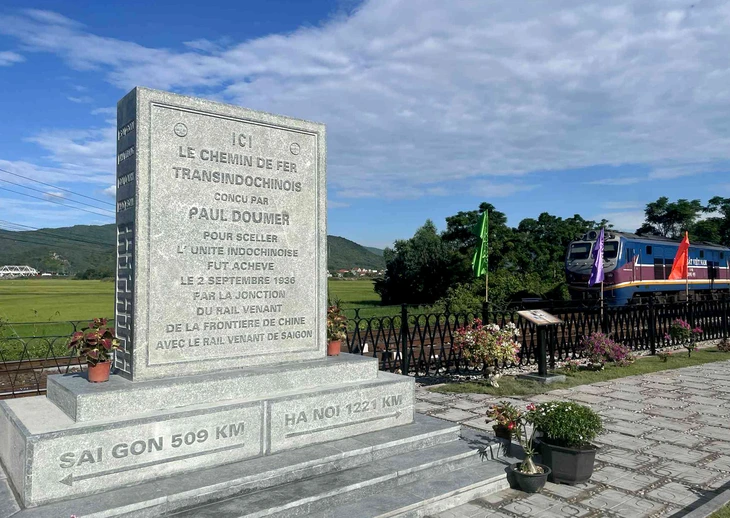
The stele marking the last rail joint of the Trans-Indochina Railway has been restored at a 1/1 scale to its original state - Photo: LINH NGUYEN
On the morning of July 28, Vietnam Railways Corporation held a ceremony to place a plaque on the project "restoring the stele marking the last rail joint of the Trans-Indochina railway" at Km 1221 of the Hanoi - Ho Chi Minh City railway line.
Restored at 1/1 scale like the stele at the inauguration of the Trans-Indochina Railway
Speaking at the ceremony, Mr. Dang Sy Manh - Chairman of the Board of Members of Vietnam Railway Corporation - said that the North - South railway line began construction in 1900.
After 36 years, at this exact location Km1221, on September 2, 1936, the final rail connection ceremony on the Trans-Indochina railway was solemnly held with the presence of King Bao Dai and Governor-General of Indochina René Robin.
That event marked a historical milestone, marking the completion of the Trans-Indochina railway with a length of more than 1,700km, connecting Hanoi and Saigon, forming a vital traffic system from North to South.
On October 1, 1936, the inauguration ceremony of the memorial stele was also held here, witnessed by King Bao Dai, Governor-General A. Sylvestre and Governor-General of Yunnan Province (China) Long Yun.
Through wars and harsh times, the original stele was severely damaged. To preserve the special historical value of the project, in 2016, the corporation rebuilt the granite stele, 150cm high, 80cm wide, 15cm thick.
"This year, the project continues to be restored and renovated by Vietnam Railways Corporation, ensuring aesthetics, being suitable for the landscape, and being worthy of the special historical and cultural value of this location," said Mr. Manh, adding that this is one of the projects with a sign welcoming the 13th Congress of Delegates of the Vietnam Railways Corporation Party Committee (2025 - 2030).
According to the report of the implementing unit, the project has restored the exact 1/1 scale of the monolithic stone stele erected by the French in 1936. The size of the stele is 1.81m high, 1.41m wide, and 0.43m thick. At the same time, the project also renovated and built the surrounding area.
According to our observations, this new stele has the same engraved patterns and inscriptions as the remaining parts of the original stele and images of this stele in the documents.
A "red address" of the railway industry
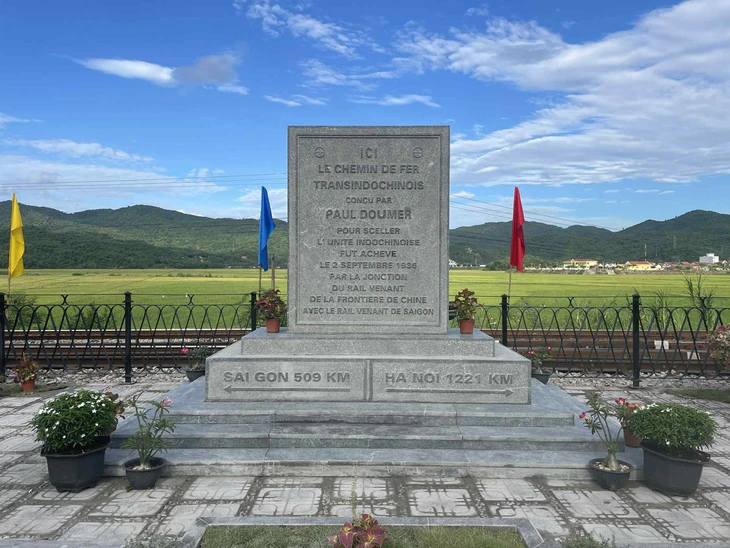
The restored stele is placed in the exact same position as the original stele erected by the French on October 1, 1936 - Photo: LINH NGUYEN
Mr. Dang Sy Manh said that the completion of the project "restoring the stele marking the last rail of the Trans-Indochina Railway" not only shows respect and preservation of the historical values of the railway industry, but also shows deep gratitude to generations of railway workers - those who have not hesitated to endure hardship and sacrifice to build the country's vital railway line, it also contributes significantly to the construction and formation of a system of "red addresses" bearing the traditional mark of the industry.
"This Km1221 relic site, together with other historical sites such as Gia Lam, Long Bien, Truong Thi, Thap Cham, Di An, Hai Phong station, Km446+885... and soon the Vietnam Railway History Museum, will form a chain of typical historical and cultural relic spaces, a place to educate revolutionary traditions, foster pride, and engrave the glorious traditions and resilient revolutionary spirit of generations of cadres, party members, and workers in the Vietnam railway industry," Mr. Manh emphasized.
As Tuoi Tre reported, at the place where the rails connected to the Trans-Indochina railway on October 1, 1936, a monolithic stone stele was erected, on which were engraved lines in French.
The words on the stele are translated into Vietnamese as follows: "Here, the Trans-Indochina railway, initiated by Paul Doumer to connect the Indochinese countries, was completed on September 2, 1936, connecting the railway from the Chinese border to the railway from Saigon." At the foot of the stele, on the left side, is engraved "Saigon 509km" and on the right side, "Hanoi 1221km".
The stele also records the names of those who participated in the final stages of completion, including 7 French people and 8 Vietnamese people.
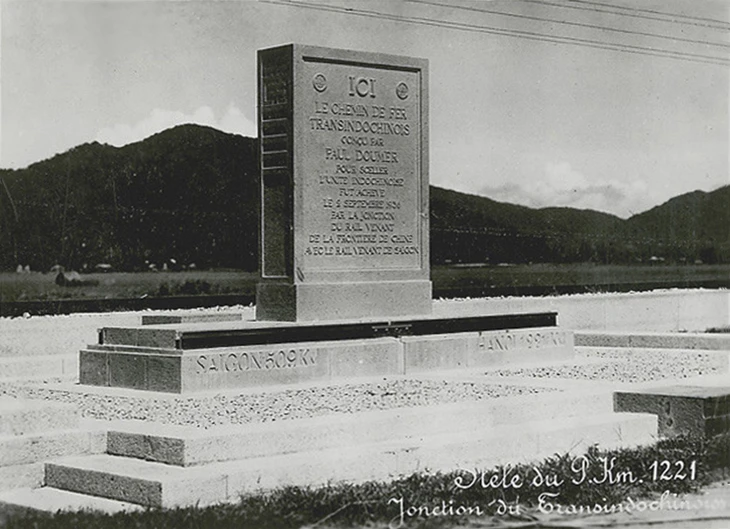
Original stele erected by the French in 1936 - Photo archive
In 2015, Tuoi Tre reporters visited the site and found the original stone stele broken, with parts of the ruins lying scattered along the tracks, covered with bushes.
In September 2015, we met with the person in charge at Phu Khanh Railway Joint Stock Company to ask why the two broken stone stele parts were not brought to the railway museum, or if there was a plan to protect them, and were told that the industry was planning to restore them.
On October 1, 2016, Vietnam Railways Corporation inaugurated the project to restore the stele marking the development of Vietnam's railway at Km1221 of the North-South railway line, right at the location where the old granite stele was erected.
Source: https://tuoitre.vn/khoi-phuc-ti-le-1-1-bia-ghi-dau-moi-noi-ray-cuoi-cung-duong-sat-xuyen-dong-duong-20250728121625648.htm





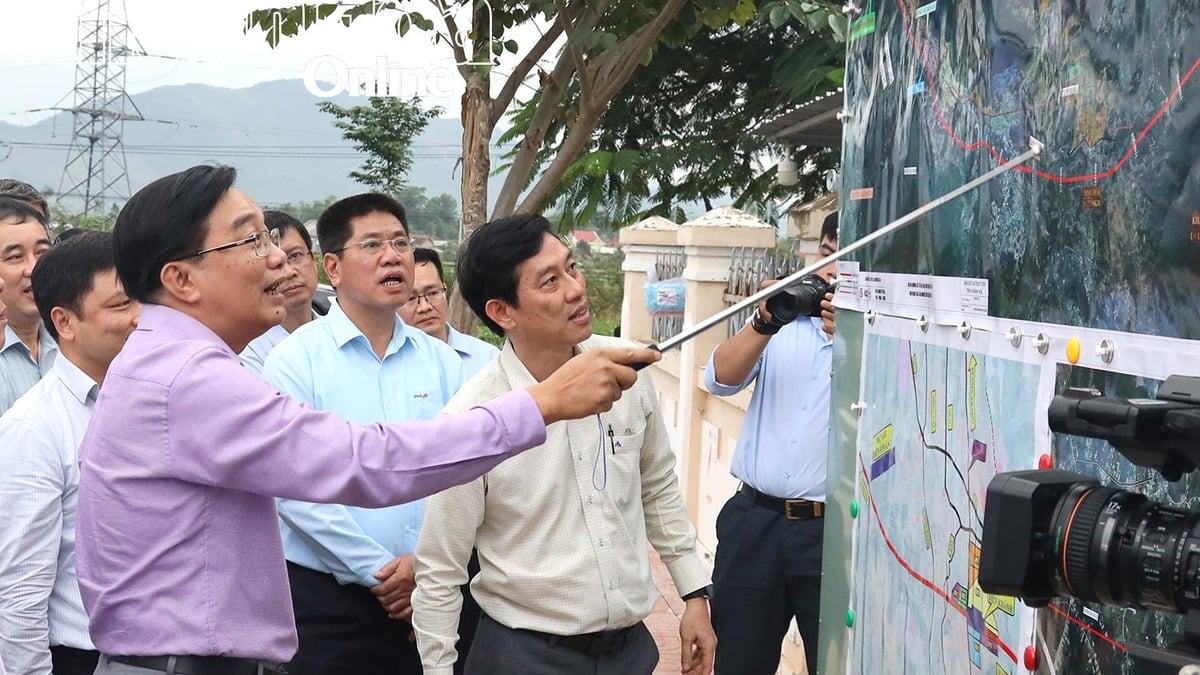




















![[Photo] National Assembly Chairman attends the seminar "Building and operating an international financial center and recommendations for Vietnam"](https://vphoto.vietnam.vn/thumb/1200x675/vietnam/resource/IMAGE/2025/7/28/76393436936e457db31ec84433289f72)








































































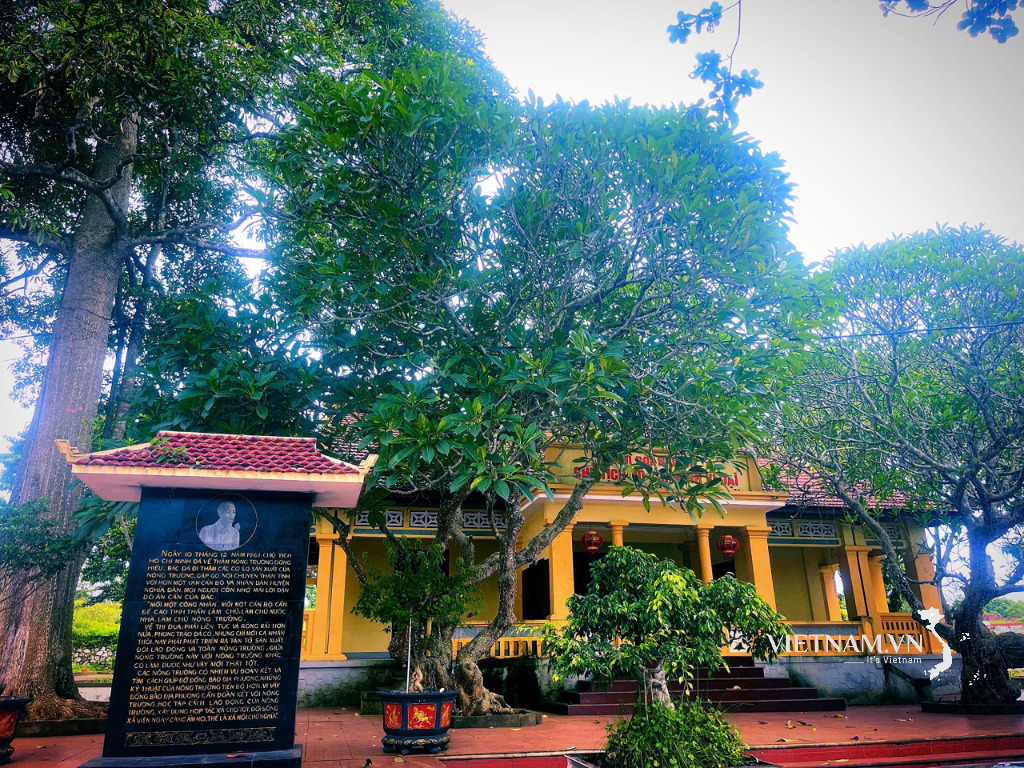
Comment (0)